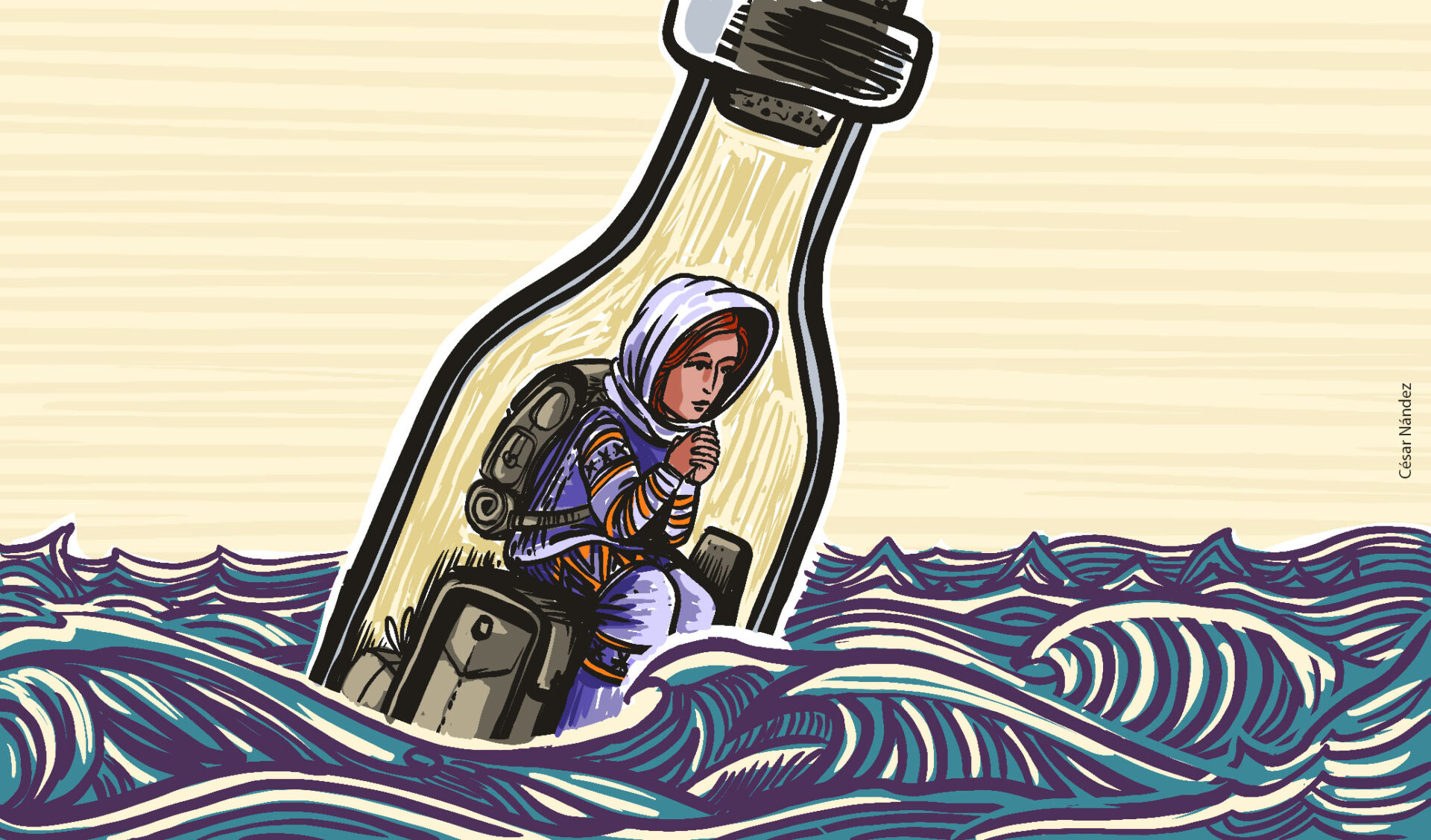According to the United Nations, at the end of 2020, there were approximately 281 million migrants worldwide, equivalent to 3.6% of the global population. Twenty-six percent of the world’s migrant population lived in the Americas, meaning that migrants comprised 7% of the region’s total population that year. At the same time, 117 million people had been forcibly displaced worldwide, representing a 950% increase over the past 10 years. Among these people, 9.2 million were displaced in the Americas, that is, 28% of the global displaced population is in Latin America and the Caribbean.
What does this data inform us?
We are the region that migrates the most. This is confirmed not only by the data but also by the priority being given to this issue at the regional level. Indeed, migration and forced displacement were the main points discussed at the III Ministerial Meeting of the Los Angeles Declaration on Migration and Protection, which took place on May 7, 202, in Guatemala City with the participation of 20 of the 22 countries that approved the document in 2022 on the sidelines of the Summit of the Americas held in Los Angeles.
Considering the priority of this agenda at the regional level, it is worth highlighting three key issues that emerged from the discussion in Guatemala. In addition to discussing the truly hemispheric nature of the migration phenomenon that is impacting practically all countries in the region as countries of origin, transit, destination, and even return, and reviewing the data; challenges and opportunities, the countries participating in the meeting also discussed: (a) the challenges of financing the reception and integration of people in situations of human mobility; (b) the urgent need to ensure a more inclusive membership in the follow-up process of the Declaration; and (c) the need to link the issues of climate change and migration. An additional element to highlight was the “de-venezolization” of the discussion of the issue, and the mention of forums such as those offered by the Palenque Declaration as alternatives for discussing migration issues at the regional level.
On the subject of the cost of migration for transit and host countries, one issue that has emerged strongly is the need for increased funding from both financial institutions and the private sector. Essentially, countries of origin must resolve the structural causes of migration and receiving countries must invest in integrating migrants and refugees. However, this has a financial cost that is difficult to bear for Latin American and Caribbean countries that continue to face economic difficulties, especially post-COVID, and with less and less access to international funds that are being invested in other crises in the world.
For instance, in 2023, at the Global Refugee Forum, more than 1,600 financial and technical cooperation announcements were made regarding care for refugees and their host communities, including US$250 million pledged by the private sector. These private sector contributions focused primarily on supporting initiatives for education, protection of people in human mobility, employment, and refugee livelihoods.
Child migration
An important aspect of why it is strategic to invest more in the management of migration and forced displacement has to do with child migration. Children and adolescents represent less than 15% of the migrant population globally, however, in Latin America and the Caribbean, they represent 25% of people in a situation of human mobility. Girls and adolescents represent about 20% of the female migratory flow in the region. Indeed, in 2022, 3.7 million children and adolescents in the region were in migration and displacement processes, representing an increase of 47% over 2021.
Secondly, and based on the inter-American spirit of cooperation and inclusion, the importance of ensuring a more inclusive membership in the process was emphasized, including the participation of other key actors that contribute to and actively participate in the ecosystem of response to migration and forced displacement. By 2024, only 22 of the 34 member states of the Organization of American States (OAS) will participate in the follow-up process to the Los Angeles Declaration on Migration and Protection with a notable absence, for example, of Anglo-Caribbean countries. The need to include civil society and academia is also evident, and, although their participation was not part of the forum as such, their contributions and proposals were received with the expectation of being able to generate institutionalized processes for their participation in the future.
A third major theme discussed was the connection between migration and climate change in two ways. On the one hand, it became evident that climate change, combined with other factors, can be a driver of migration. A key example close to the Guatemalan reality is that of the Central American Dry Corridor and the impact that droughts can have on the food security of these populations. In fact, United Nations data estimate that 17 million people will be displaced by climate change and environmental degradation in the coming years, and it is a reality that also affects Latin America and the Caribbean, especially.
On the other hand, and from the perspective of what is currently happening in Darien, the environmental impact of the passage of people through this migratory route was also discussed. To illustrate the latter, data from Panama’s border migration authority document that, in 2023, at least 520,085 people crossed the Darien, which represents an increase of 109% over what was recorded in 2022 (around 248,000 people) and 133,000 people in 2021. Between January and April 2024, 139,000 people have crossed from Colombia to Panama through Darien, 20% of the total being minors.
At the same time, significant environmental damage is also occurring, such as the loss of primary forests, loss of soil due to erosion, and the contamination of rivers and beaches by garbage in the National Park, among others, due to the constant passage of people. Undoubtedly, this is a little-addressed issue and should be increasingly included among the priorities of the regional discussion.
Venezuelan migration
Finally, more than 7.7 million Venezuelan refugees and migrants have left their country of origin since 2018, of which some 6.5 million (84%) are being received in Latin American and Caribbean countries. On the other hand, of the 139,000 people who crossed the Darien between January and April 2024, 63% were Venezuelans. Nonetheless, the Venezuelan exodus was not at the center of the discussion as in previous meetings, nor were the challenges that this migration represents given the volume and speed of the movements of the Venezuelan people given the precarious conditions of their migratory transit.
Meanwhile, the possibility of addressing these issues in the framework of other forums, particularly the one that has emerged from the Palenque Meeting held in Mexico in 2023, in which Cuba and Venezuela participate, has also entered the discussion radar.
Undoubtedly, the region’s countries took a positive step by adopting the Los Angeles Declaration on Protection and Migration on the sidelines of the Summit of the Americas 2022 held in Los Angeles. However, almost two years after its adoption, the expectation persists that this new mechanism for regional cooperation on migration can offer new and better results and add value to what was previously achieved. This is something that we will be able to assess over time and as the process continues to institutionalize and will be a key priority for the countries of the region.
*Translated by Micaela Machado Rodrigues from the original in Spanish.
Autor
Director of the Social Inclusion Dept., OAS Secretariat for Access to Rights and Equity. Co-Coordinator of the Network #NoSinMujeres. Draper Hills Fellow in Democracy, Development and Rule of Law at Stanford University.











